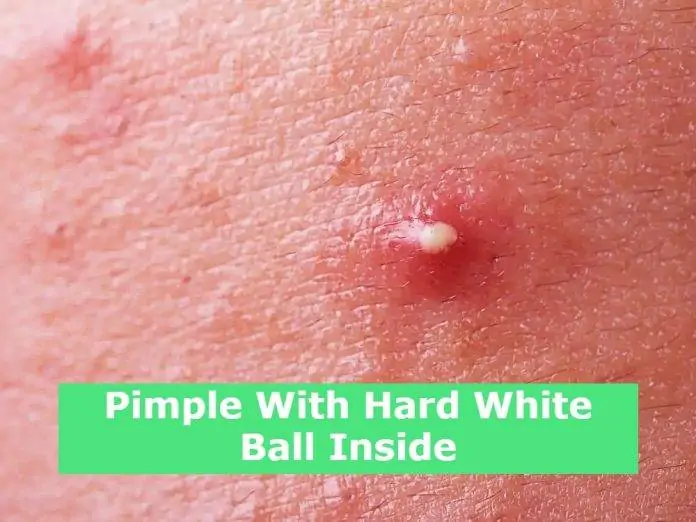When you get a pimple, it may seem like a simple matter of popping it out, but there are many reasons why a pimple can stay in place. These include the size and shape of the pimple, whether it’s a soft or hard ball inside the pimple, and what it’s covered with.
Papules
A pimple with a hard white ball inside is an acne lesion. This can be a pustule or a nodule. Both of these acne lesions can cause itching and inflammation. They can also be painful to the touch. It is important to treat these lesions as soon as possible to help prevent them from worsening.
Pustules occur when a pore becomes clogged with dead skin cells, oil, and bacteria. Bacteria in the pore can irritate the area and lead to inflammation. Inflamed follicles can result in papules, milia, or cysts. These types of lesions can be very irritating and can leave a red or white scar if left untreated.
Pustules
Pustules with hard white ball inside are lumps of skin that have fluid filled with dead white blood cells and bacteria. They are very uncomfortable to touch and can be painful.
Pustules can be caused by many things, including infections, acne, and allergic reactions. The most common cause of pustules is an infection in the pore cavity. Symptoms include redness and inflammation. Occasionally, pustules can develop into cysts.
In addition to the main causes of pustules, certain types of psoriasis can also trigger the formation of these small bumps. Fortunately, the condition can be treated with medication.
If your pustules are not resolving quickly, you should visit a doctor. Your dermatologist may prescribe antibiotics or other medications to clear up your problem. You should not pop the pimples as this can spread bacteria. However, if you cannot see a doctor, you can try over-the-counter products that have ingredients that fight off the bacteria.
Cysts and nodules
A hard white ball inside of a cyst or nodule can be a cause for concern. They are not cancerous and usually go away without treatment. However, some may require a medical checkup. These lumps can be difficult to diagnose and even harder to treat.
There are a variety of causes for these bumps, including inflammation, infection, injury, and clogging of a duct. Treatment depends on the size, location, and nature of the lump. Some people are more prone to develop these lumps than others.
The most common types of cysts are milia and epidermoid cysts. Milia are small, white bumps that develop when bits of dead skin cells are trapped under the surface of the skin. Epidermoid cysts are round, yellow or white lumps that form beneath the skin. If they become infected, they can lead to a red and painful rash.
Milia
Milia is a benign skin condition that can appear anywhere on the body, including on the face. It is most often seen on the forehead, cheeks, nose and eyelids. While it is usually harmless, milia can become inflamed.
Milia can occur as a result of trauma or a skin disorder. The underlying cause of milia is a plug of oil or debris that is trapped inside a pore. If you’re experiencing milia, there are several treatment options. Some are simple at home remedies, while others require professional help.
The process for milia removal can be as simple as washing your face every day. However, it can also involve the help of a dermatologist. They can remove the milia using a sterile needle or scalpel.
Chalazion
A chalazion is a round, swollen, firm bump that forms on the eyelids. They tend to be located on the upper or lower lids. Chalazia are often caused by a blockage in the oil glands. When these glands are blocked, bacteria can grow, which can result in an infection.
Generally, chalazia are not painful. However, they can become infected if not treated properly. It is important to see an eye doctor if your chalazion is painful or if you notice any other symptoms. If left untreated, a chalazion can cause damage to your eyesight.
You should also be aware that a stye can form when a chalazion is not drained. Stye are usually painful and swollen. Although they can be removed on their own, you should seek medical attention if they don’t go away in a few weeks.




